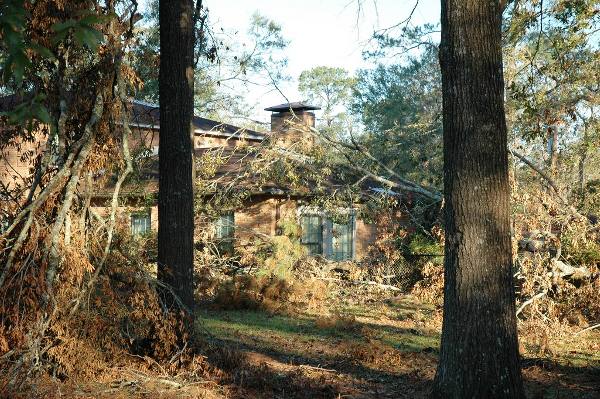
Texas AgriLife Extension Service has made many of its disaster and emergency-related materials available in e-book format for mobile device users.Materials may be downloaded to any mobile device supporting the e-book format, including phones, tablets and e-readers.E-books provide just-in-time disaster recovery information.
May 14, 2012

In conjunction with the state’s Hurricane Preparedness Week and other preparedness efforts, the Texas AgriLife Extension Service has made many of its disaster and emergency-related materials available in e-book format for mobile device users.
“With hurricane season approaching, this is a key time for AgriLife Extension to again make Texas residents aware of its many hurricane preparedness and other disaster-related resources and to let them know which are now available as e-books,” said Dr. Andy Vestal, AgriLife Extension director for homeland security and emergency management at Texas A&M University in College Station.
Vestal said converting hurricane preparedness publications to e-book format was a result of actions by AgriLife Extension and Texas AgriLife Research incident response team members engaged in the statewide Mobile Device Initiative.
“These e-books provide just-in-time disaster recovery information and we hope as many Texans as possible will take the opportunity to download this information to their mobile devices so they can be ready now that we’re nearing hurricane season,” he said.
“This is a simple but effective first step Texans can take toward basic hurricane preparedness and dealing with the aftermath of a hurricane or other natural disaster,” said Treye Rice, AgriLife Extension web design and usability specialist, College Station.
Rice, who manages and supplies some content for the Texas Extension Disaster Education Network, or Texas EDEN website, said the new e-book publications may be found at http://texashelp.tamu.edu/disaster-preparedness-recovery-ebooks.php.
He said the materials may be downloaded to any mobile device supporting the e-book format, including phones, tablets and e-readers.
“These disaster preparedness and recovery e-books provide simple information on how individuals, families and businesses can prepare for and recover from a disaster,” said Dr. Joyce Cavanagh, AgriLife Extension specialist in family development and resource management, College Station. “They contain practical, useful information provided by AgriLife and Texas A&M System experts, as well as experts from state and federal agencies and from throughout the national land-grant university Extension system.”
Hurricane and other disaster preparedness and recovery materials now available in e-book format are:
– After a Disaster – Information to Help Your Family Recover: This guide provides credible and reliable information on disaster preparedness and recovery for individuals and families in urban and rural communities, emphasizing how to reduce the damage associated with a disaster. Available in English and Spanish.
– Preparing Your Evacuation “Grab and Go” Box: Explains the need for an individual and family evacuation plan, as well as suggested contents for an evacuation “to-go” box to be prepared for emergency situations.
– Hurricane Preparedness for Livestock Producers: This guide shows how to help protect livestock from injury should a hurricane occur and briefly covers vaccinations, barn preparation, livestock evacuations, feed, and hay and water storage.
– Care and Treatment of Livestock After a Hurricane: Hurricanes can put livestock in immediate danger of drowning from flooding. Also, flying debris or collapsing buildings can injure animals. This publication has information on what livestock owners might expect after a hurricane strikes and provides suggestions on handling affected livestock.
– Emergency Food and Water Supplies: Safe food and water supplies are a major concern following a natural disaster. Families who live in disaster-prone areas can benefit from this information on how to safely handle food and water in the days immediately following a disaster.
– Handling Food and Drinks When Losing Power: This brief guide explains what is safe to eat or refreeze and what should be thrown out after loss of power to the home.
– Disinfecting Water After a Disaster: After a disaster such as a hurricane or flood, water supplies may have become contaminated or been temporarily cut off. This guide briefly explains how to disinfect water using household chemicals, how to find water in and around your home, and how to store water safely.
–Tree Care Kit: This guide helps show how to improve urban tree health, position trees to better withstand hurricanes and other severe weather, and minimize damage to and loss of trees and surrounding structures.
– Protection of Rangeland and Pastures from Wildfire: Grazing lands are subject to wildfire because of an abundance of fine fuel, dry conditions and proximity to an ignition source. This publication shows how rangeland and pastures may be better protected from accidental fires, such as employing the use of firebreaks.
– After a Wildfire: Checklist of Considerations for Post-Fire Management: The loss of standing vegetation affects not only the availability of food for livestock, but also of food and habitat for wildlife. This publication provides a checklist of considerations for post-fire management.
You May Also Like



